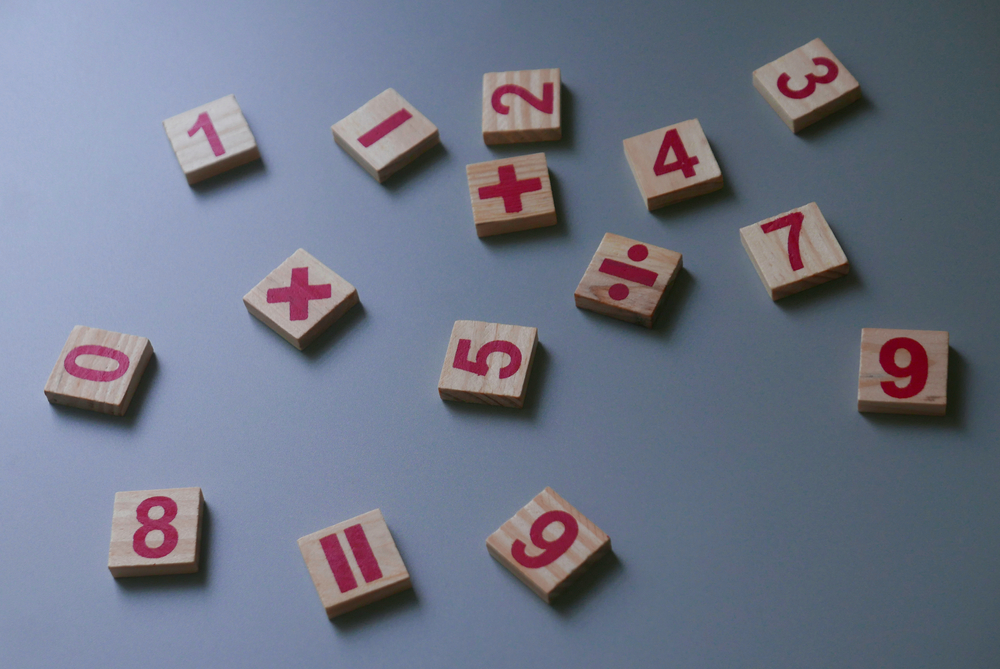Normal Time Worksheets for Ages 5-6
5 filtered results
-
From - To
Welcome to our collection of Normal Time Worksheets for Ages 5-6! Designed to make learning fun and engaging, these worksheets help young learners understand the concepts of time, including reading analog clocks and understanding hours and minutes. Each worksheet is crafted to align with educational standards, ensuring that children build healthy foundational skills in time-telling. With colorful illustrations and interactive activities, these resources capture children's interest while supporting their learning journey. Perfect for use at home or in the classroom, our worksheets provide not just practice, but also encouragement to develop confidence in their mathematical abilities. Start your child's time mastery today!


Years Worksheet
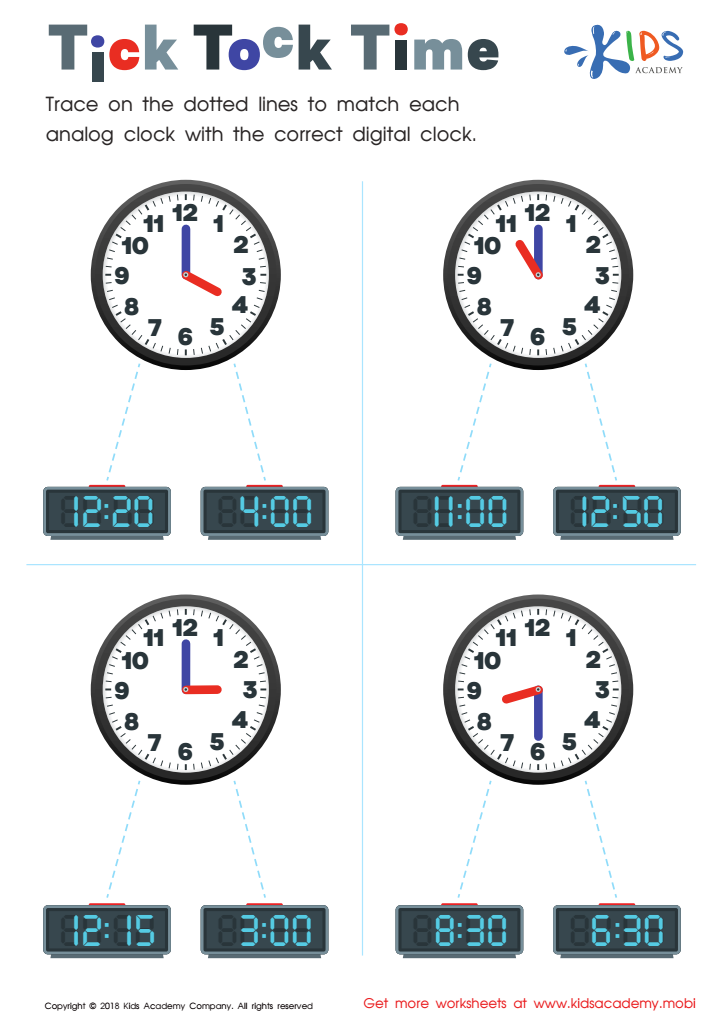

Tick Tock Time Worksheet
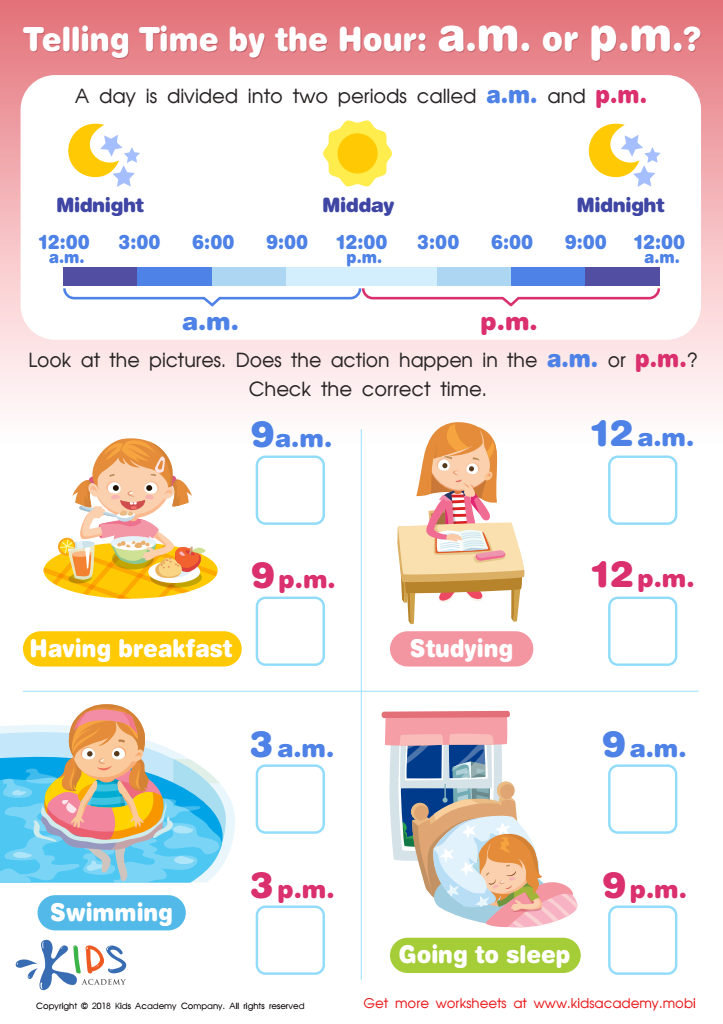

Tilling Time by the Hour: a.m. or p.m.? Worksheet
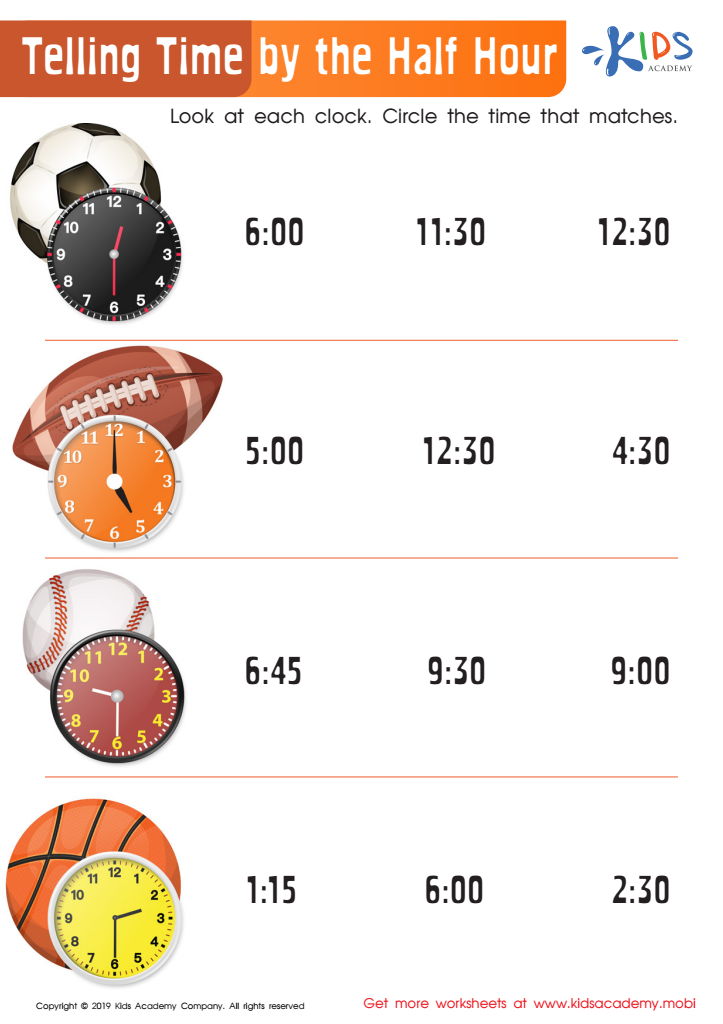

Telling Time by the Half Hour Worksheet
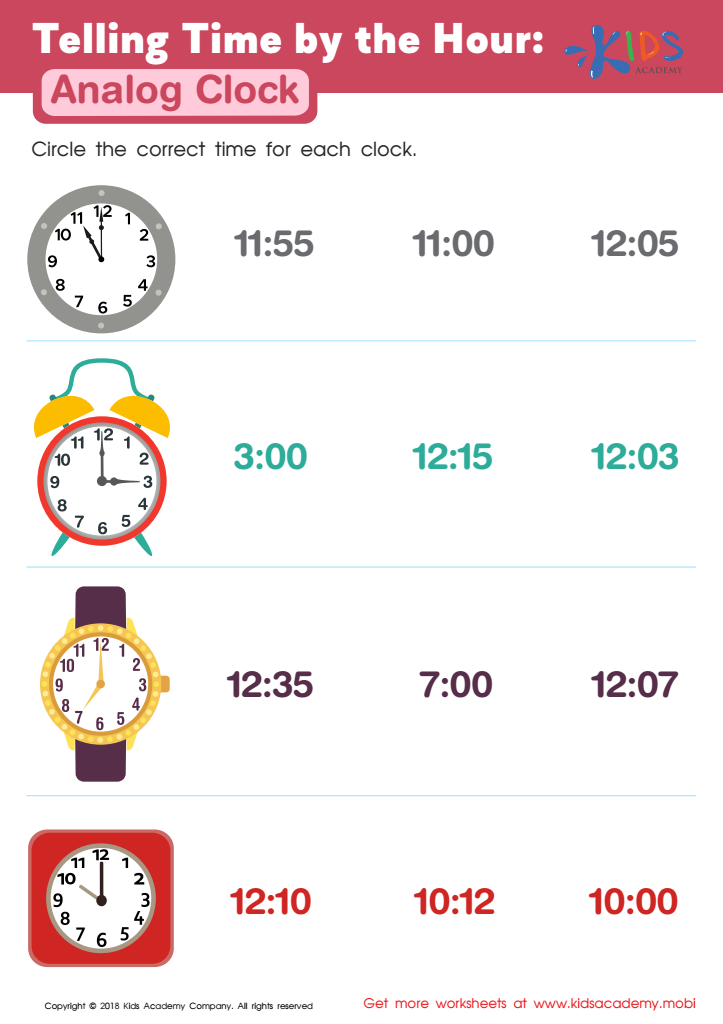

Telling Time by the Hour: Analog Clock Worksheet
Normal Time for ages 5-6 refers to the developmental milestones and experiences that children in this age group typically encounter. It is crucial for parents and teachers to pay attention to this period because it lays the foundation for future learning and social interactions.
At this age, children are developing key cognitive, emotional, and social skills. They engage in imaginative play, begin to understand concepts of time and space, and enhance their vocabulary. By prioritizing Normal Time, parents and teachers can create enriched environments that foster curiosity and creativity.
Additionally, this is a critical time for establishing routines and instilling self-discipline. Activities structured around Normal Time help children develop a sense of security and predictability, which is vital for their emotional well-being. For teachers, understanding Normal Time enables them to tailor lessons that meet developmental needs and capitalize on children’s natural interests.
Finally, encouraging interaction with peers teaches important social skills, such as sharing and cooperation. By stressing the importance of Normal Time, parents and teachers support a holistic approach to child development, ensuring children are equipped for academic success and positive social connections as they grow.
 Assign to My Students
Assign to My Students


